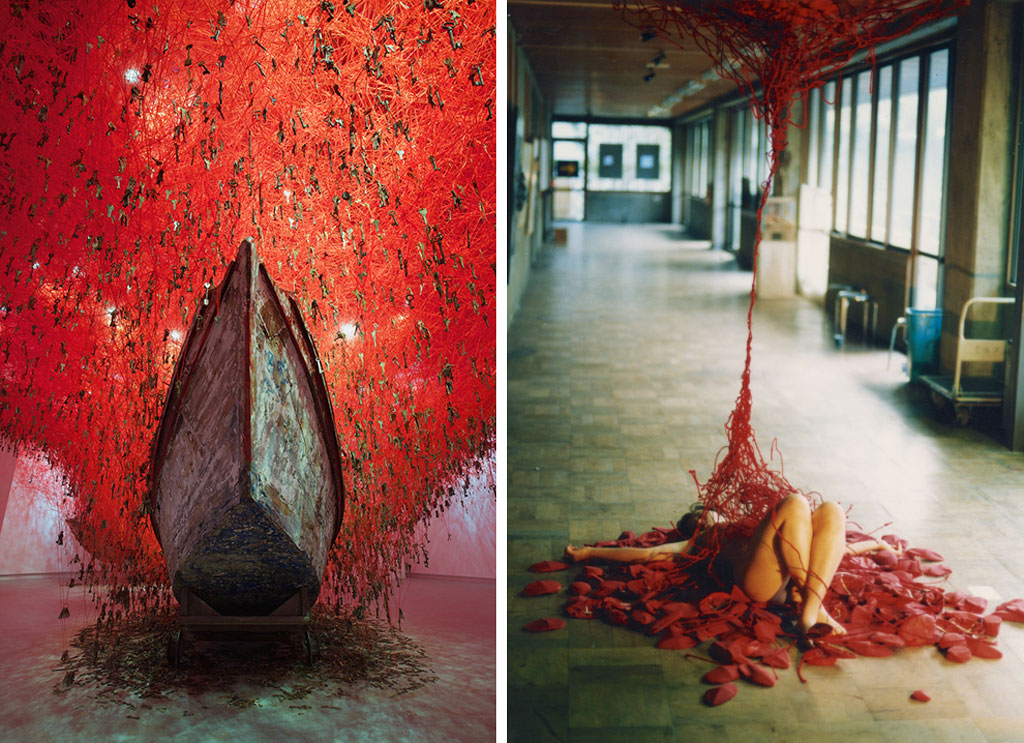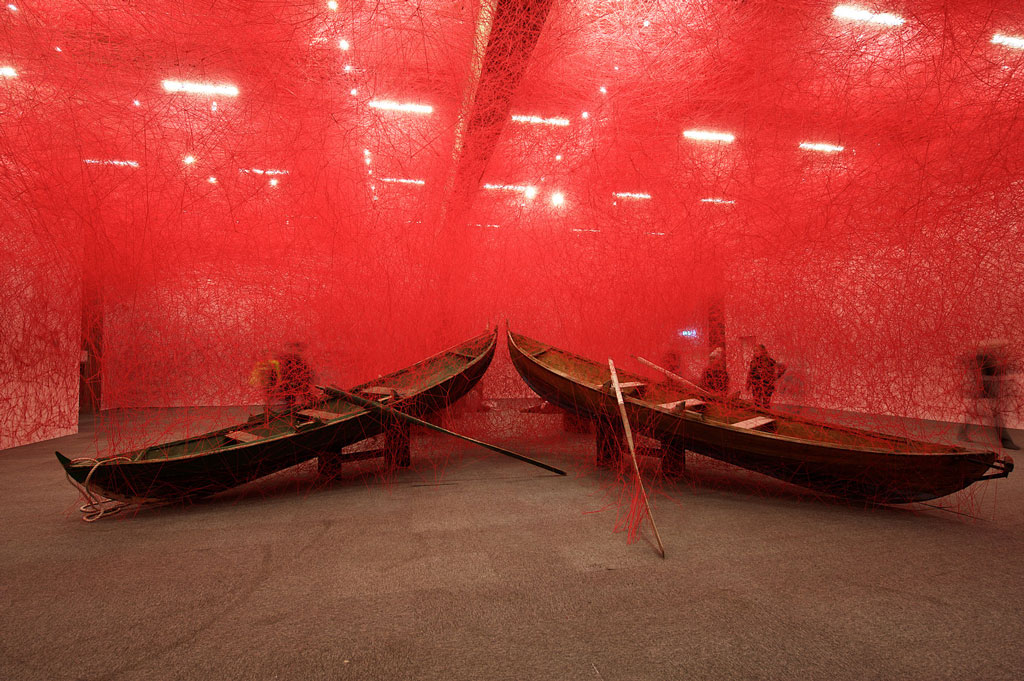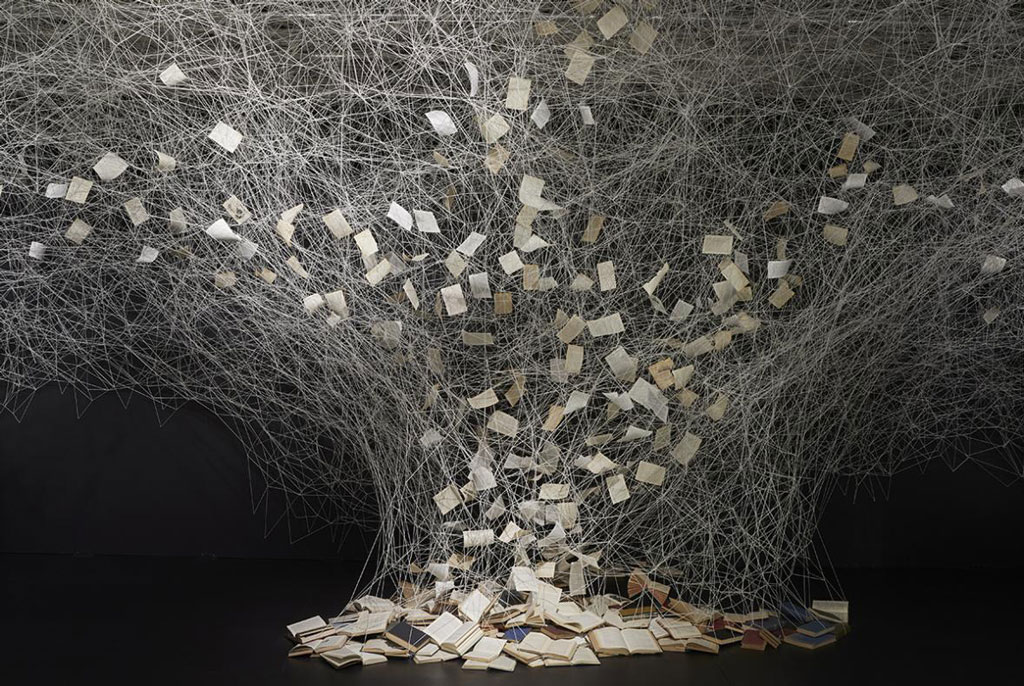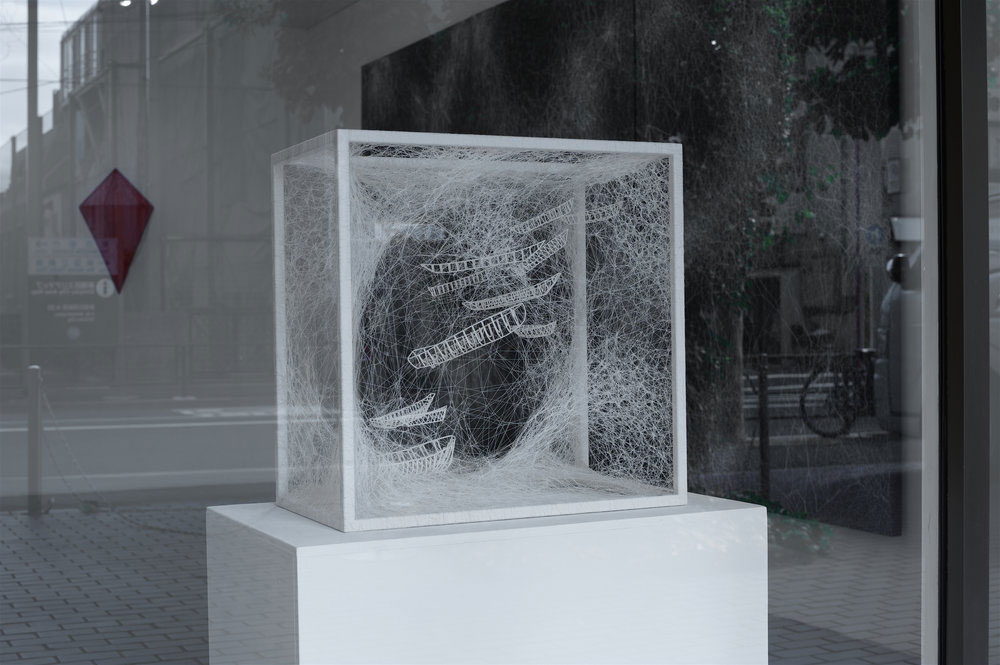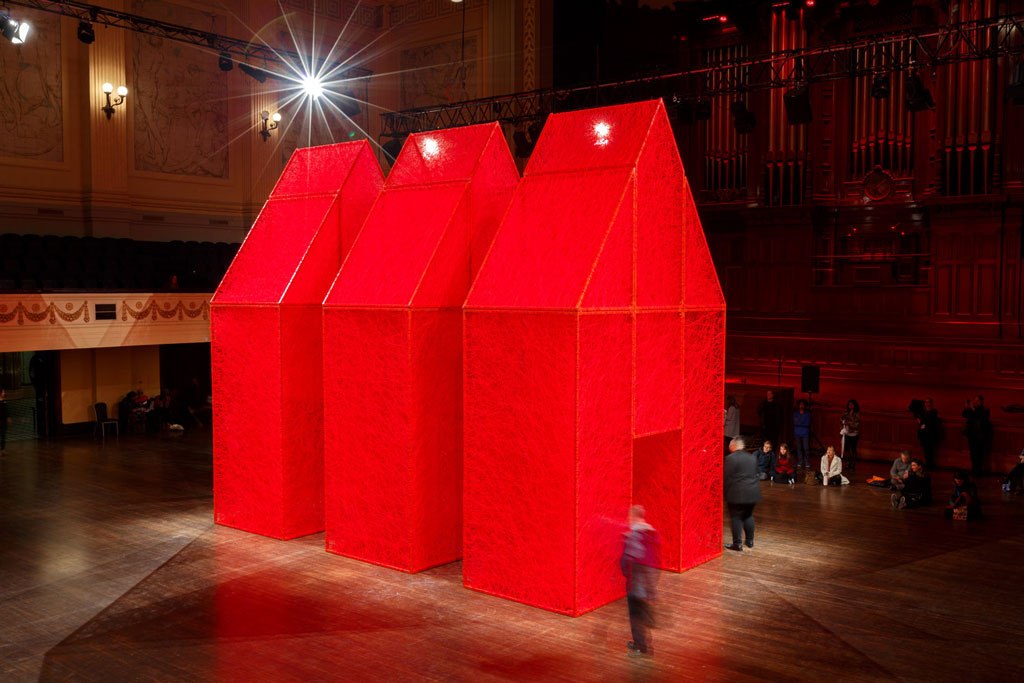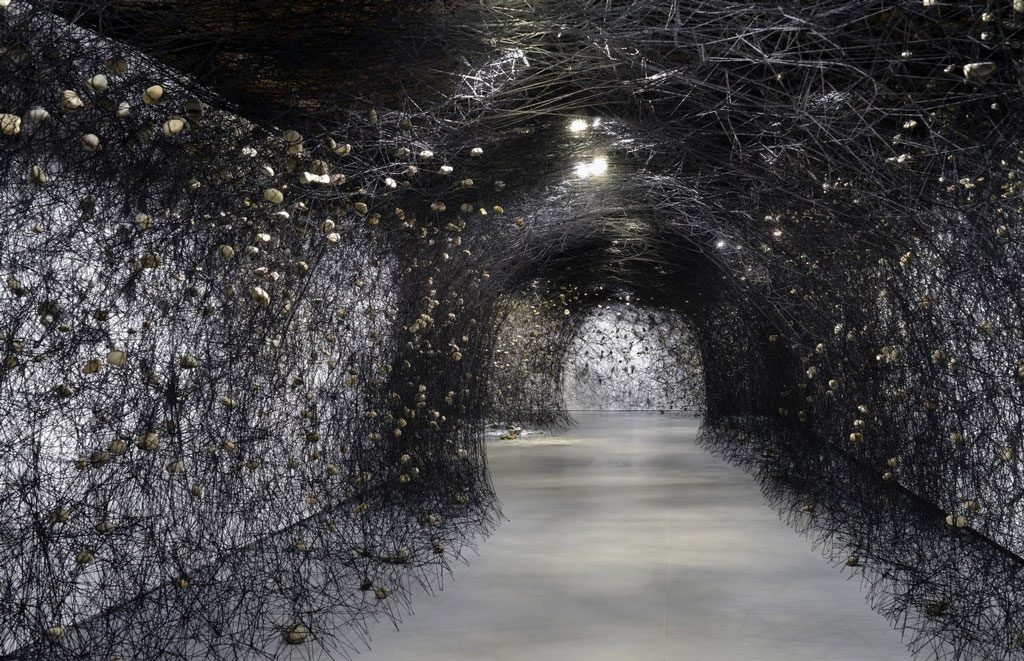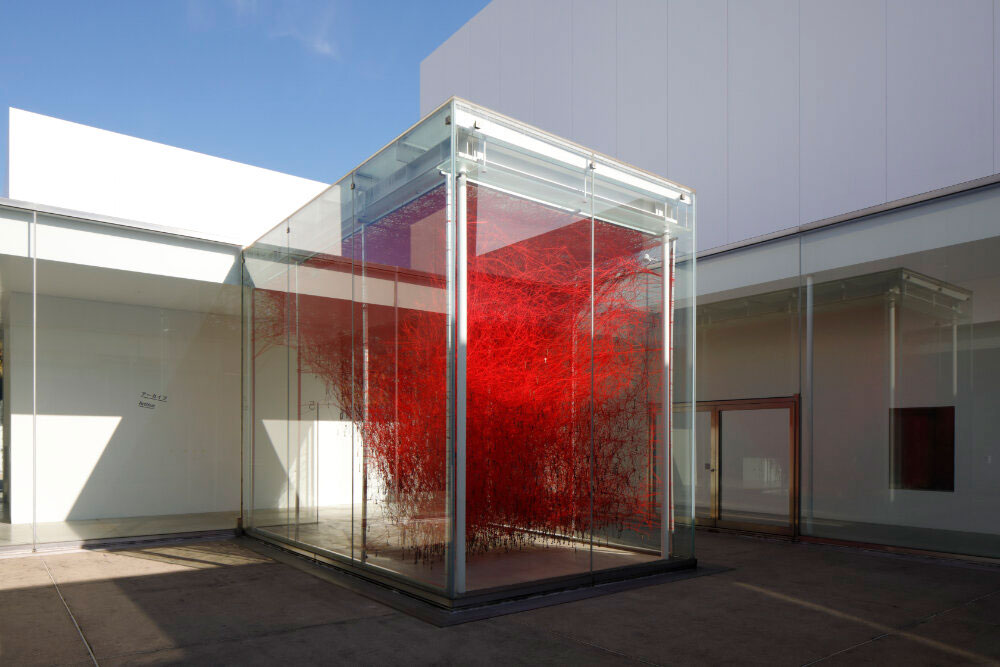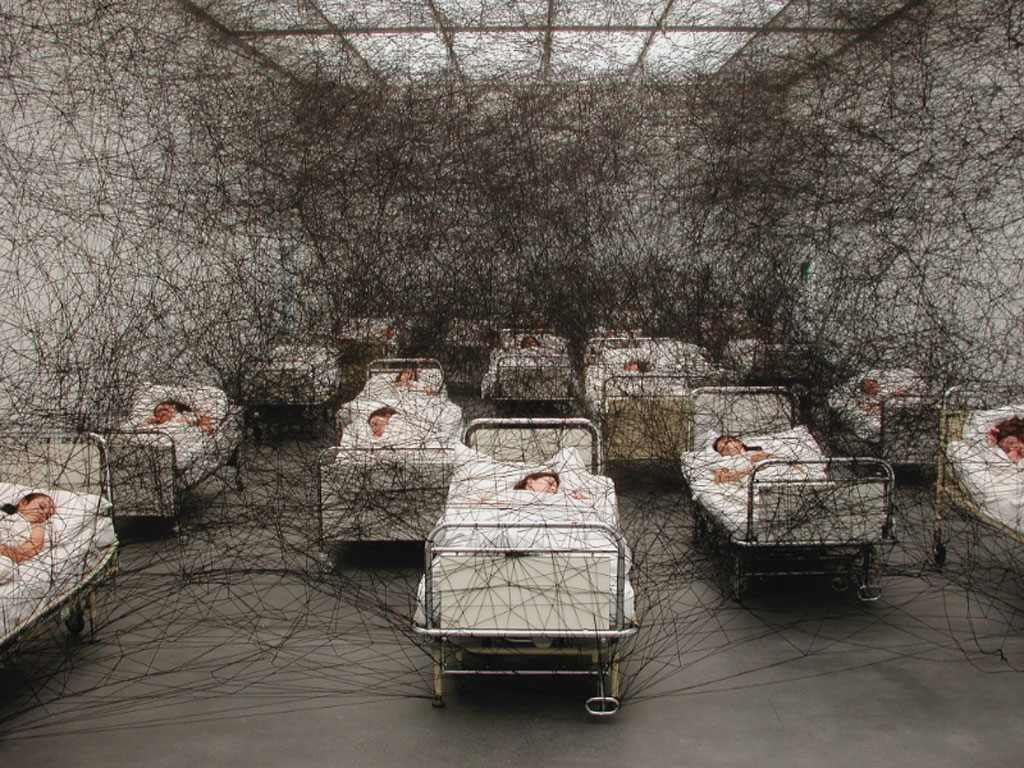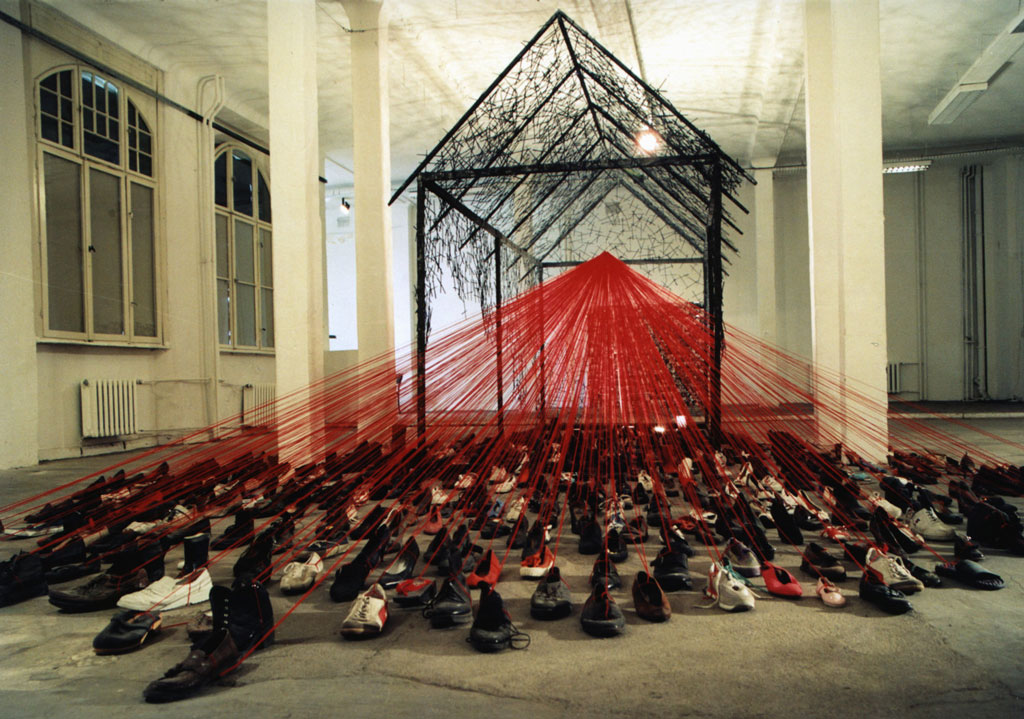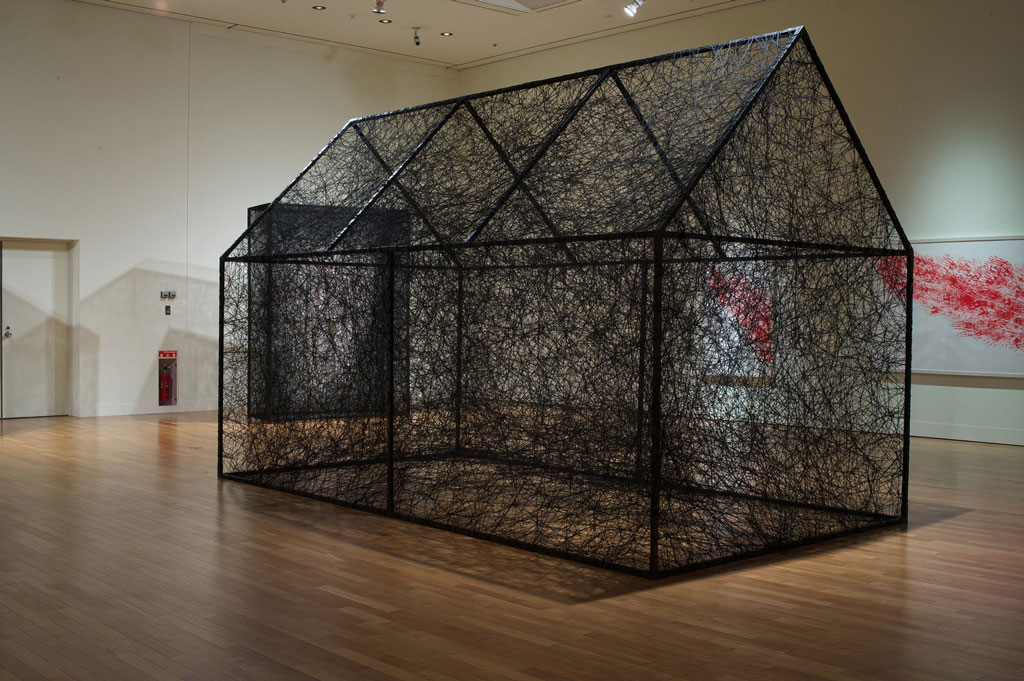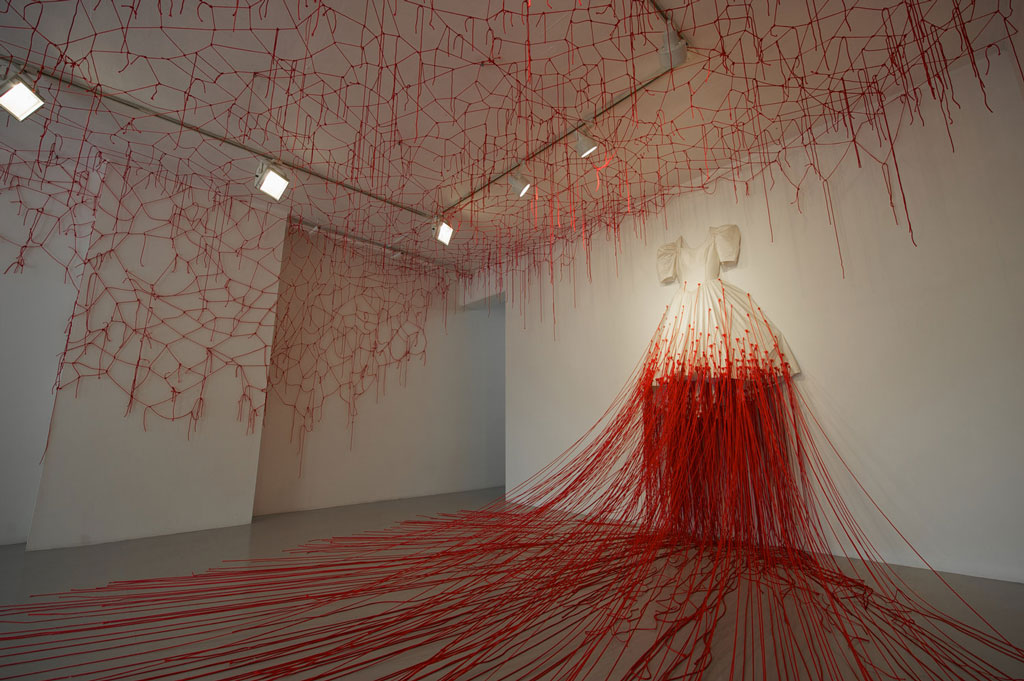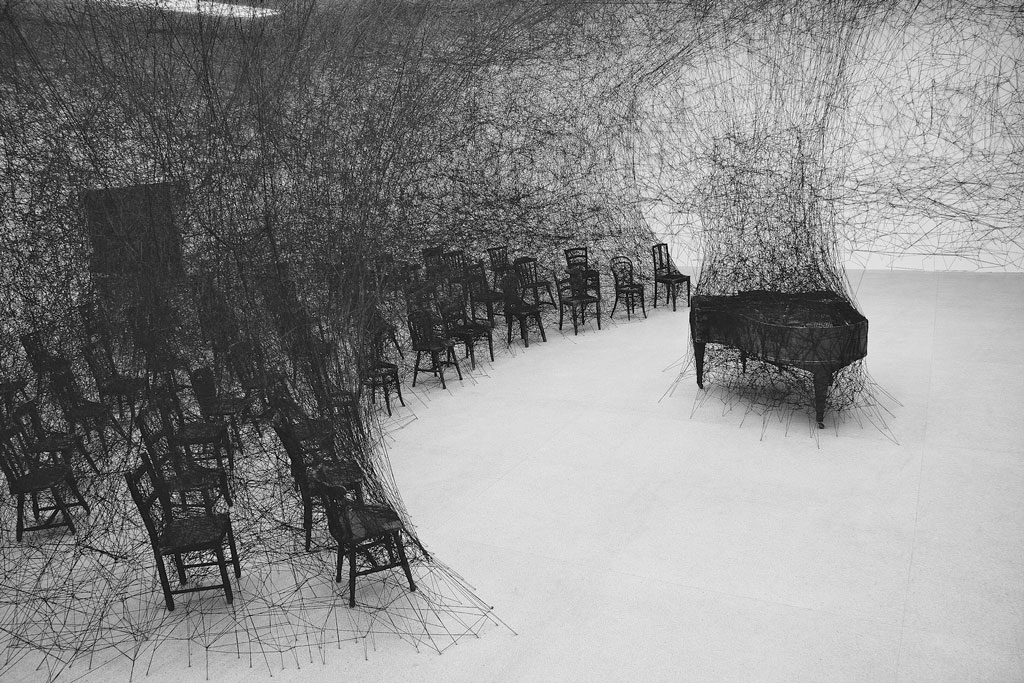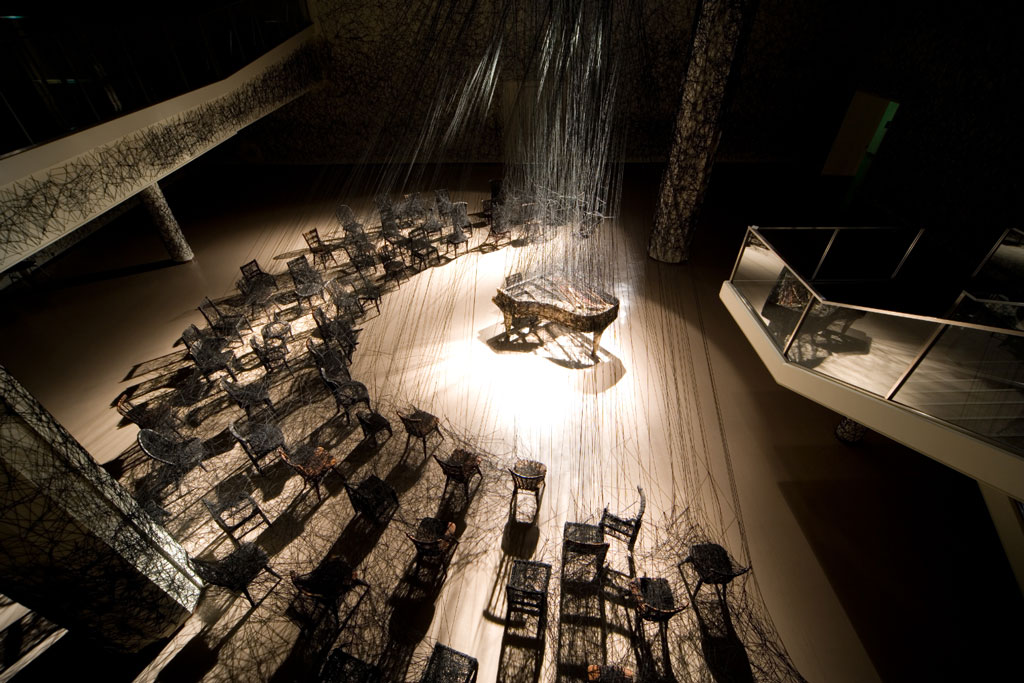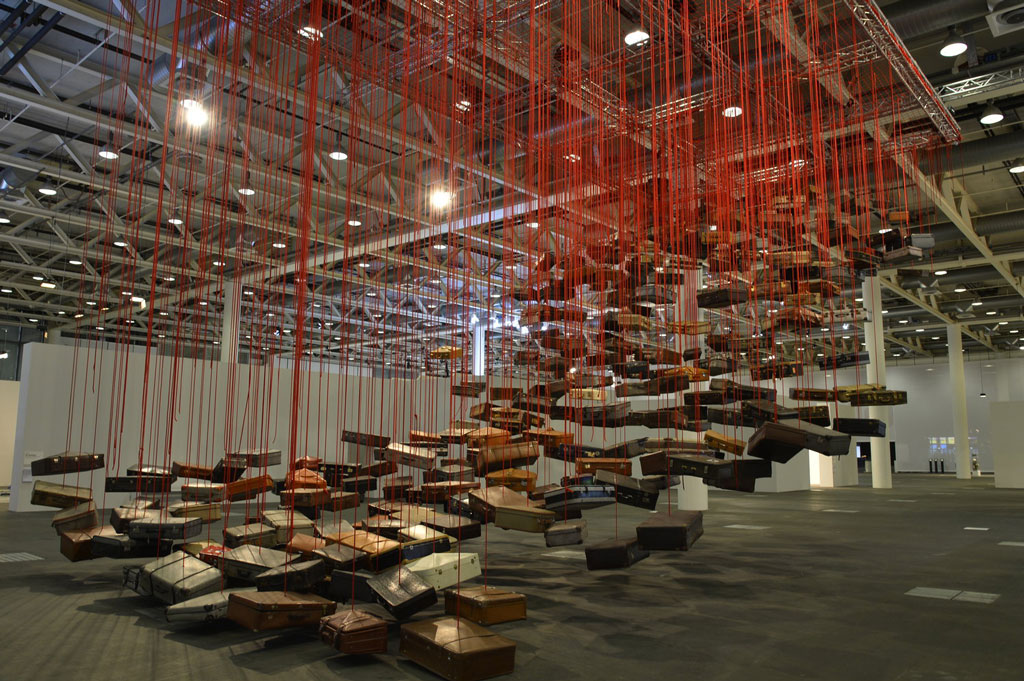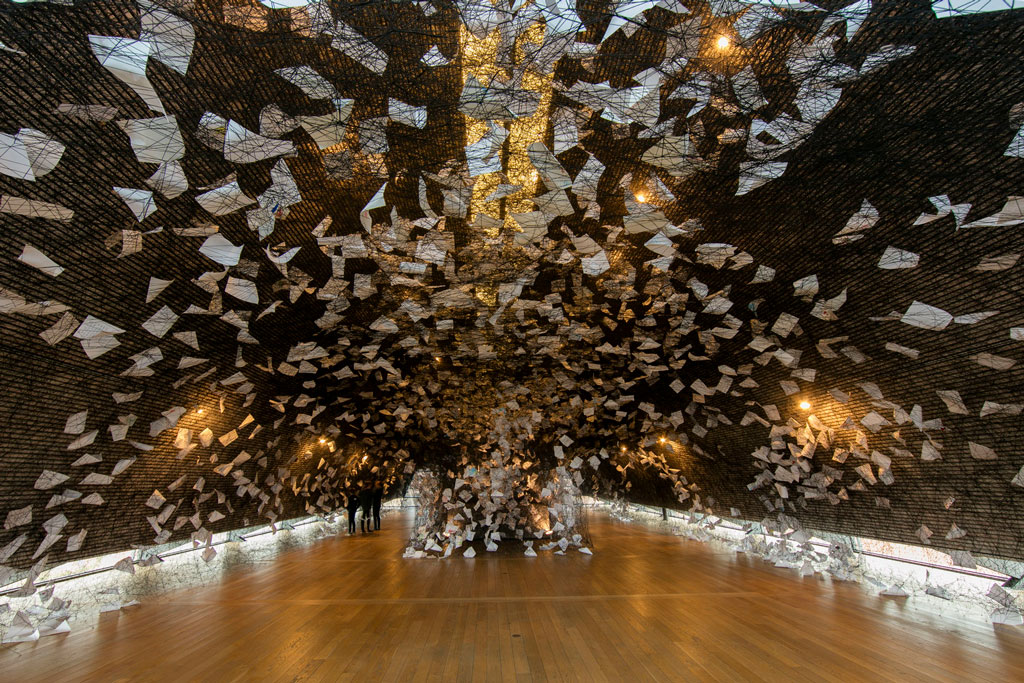ART-TRIBUTE:Weaving and other Practices… Chiharu Shiota
 We continue our Tribute with Chiharu Shiota (1972- ) best known for creating room-filling, monumental, delicate and poetic environments. Central to the Chiharu Shiota’s work are the themes of remembrance and oblivion, dreaming and sleeping, traces of the past and childhood, and dealing with anxieties. Chiharu Shiota in her installations often employs the use of everyday objects, within her work to explore the relationship between living and dying and to access memories found within these objects.
We continue our Tribute with Chiharu Shiota (1972- ) best known for creating room-filling, monumental, delicate and poetic environments. Central to the Chiharu Shiota’s work are the themes of remembrance and oblivion, dreaming and sleeping, traces of the past and childhood, and dealing with anxieties. Chiharu Shiota in her installations often employs the use of everyday objects, within her work to explore the relationship between living and dying and to access memories found within these objects.
By Efi Michalarou
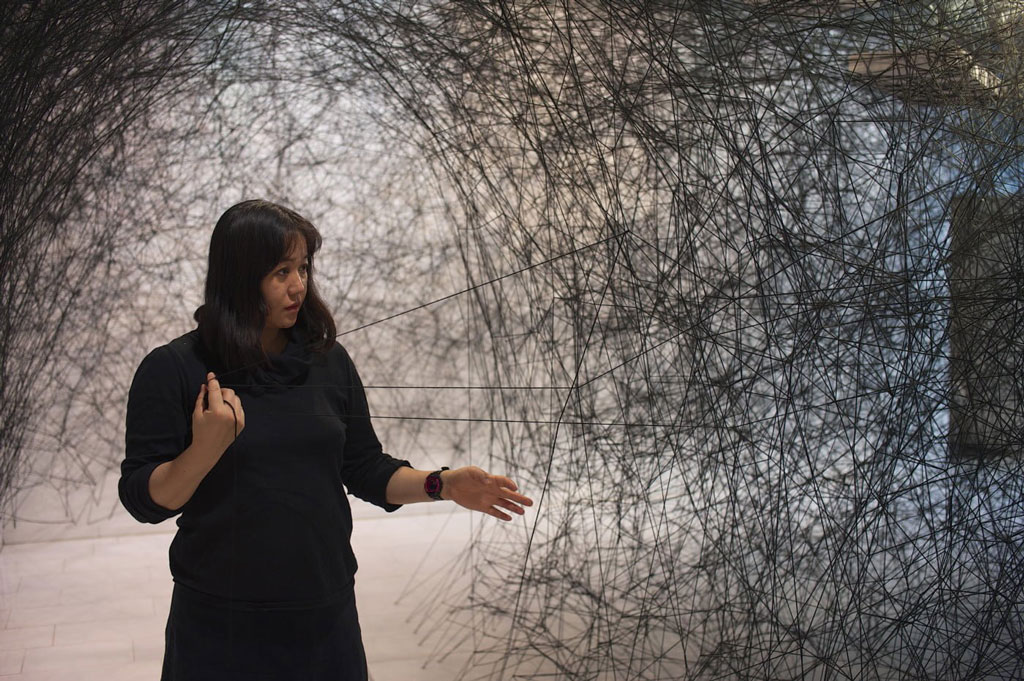 Chiharu Shiota was born in Osaka and initially studied painting at Seika University, Kyoto. During this time, she undertook an exchange residency at Canberra School of Art, Australia. It was here that she began to explore the boundaries of painting, staging her first performance “Becoming Painting” (1994) in which she used her body as a canvas. By connecting painting and performance, she has become an integral part of her own art. Shiota moved to Germany in 1996 and continued her studies, firstly in Braunschweig and later Berlin, where she still lives and works. Her education at German art schools with Marina Abramovic from 1996 provides a key to her pictorial language that is unmistakably oriented around the artistic solutions of the performance and installation art of the 1970s. Marina Abramovic along with Ana Mendieta, Janine Antoni, Louise Bourgeois, Carolee Schneemann, and Rebecca Horn, are the forerunners of the performative installation art on which Shiota’s pictorial language builds. Constricting and completing a space, transcending linguistic, cultural, and historical contexts and socio-political conditions, Shiota’s work has made a deep impression on viewers all around the world. Ever since she represented her work “The Key in the Hand” (2015) at the Japanese pavilion at the Venice Biennale, giant networks made of yarn have become a trademark of Chiharu Shiota’s work. For her complex networks of yarn around and between the objects the artist says ”The weaving process is a way of conveying existence in the absence. I would say it is the other way round. By creating webs, I tend to wrap individual memories and shine a light on human relationships”. Her work is critically acclaimed internationally, and she is the recipient of numerous notable prizes including the Art Encouragement Prize from the Japanese Minister of Education and the Audience Choice Award at The First Kyiv International Biennale of Contemporary Art. Her repertoire also includes set designs for several major theatrical and operatic productions including Daniel Karasek’s Tristan and Isolde at Theater Kiel, Germany.
Chiharu Shiota was born in Osaka and initially studied painting at Seika University, Kyoto. During this time, she undertook an exchange residency at Canberra School of Art, Australia. It was here that she began to explore the boundaries of painting, staging her first performance “Becoming Painting” (1994) in which she used her body as a canvas. By connecting painting and performance, she has become an integral part of her own art. Shiota moved to Germany in 1996 and continued her studies, firstly in Braunschweig and later Berlin, where she still lives and works. Her education at German art schools with Marina Abramovic from 1996 provides a key to her pictorial language that is unmistakably oriented around the artistic solutions of the performance and installation art of the 1970s. Marina Abramovic along with Ana Mendieta, Janine Antoni, Louise Bourgeois, Carolee Schneemann, and Rebecca Horn, are the forerunners of the performative installation art on which Shiota’s pictorial language builds. Constricting and completing a space, transcending linguistic, cultural, and historical contexts and socio-political conditions, Shiota’s work has made a deep impression on viewers all around the world. Ever since she represented her work “The Key in the Hand” (2015) at the Japanese pavilion at the Venice Biennale, giant networks made of yarn have become a trademark of Chiharu Shiota’s work. For her complex networks of yarn around and between the objects the artist says ”The weaving process is a way of conveying existence in the absence. I would say it is the other way round. By creating webs, I tend to wrap individual memories and shine a light on human relationships”. Her work is critically acclaimed internationally, and she is the recipient of numerous notable prizes including the Art Encouragement Prize from the Japanese Minister of Education and the Audience Choice Award at The First Kyiv International Biennale of Contemporary Art. Her repertoire also includes set designs for several major theatrical and operatic productions including Daniel Karasek’s Tristan and Isolde at Theater Kiel, Germany.

